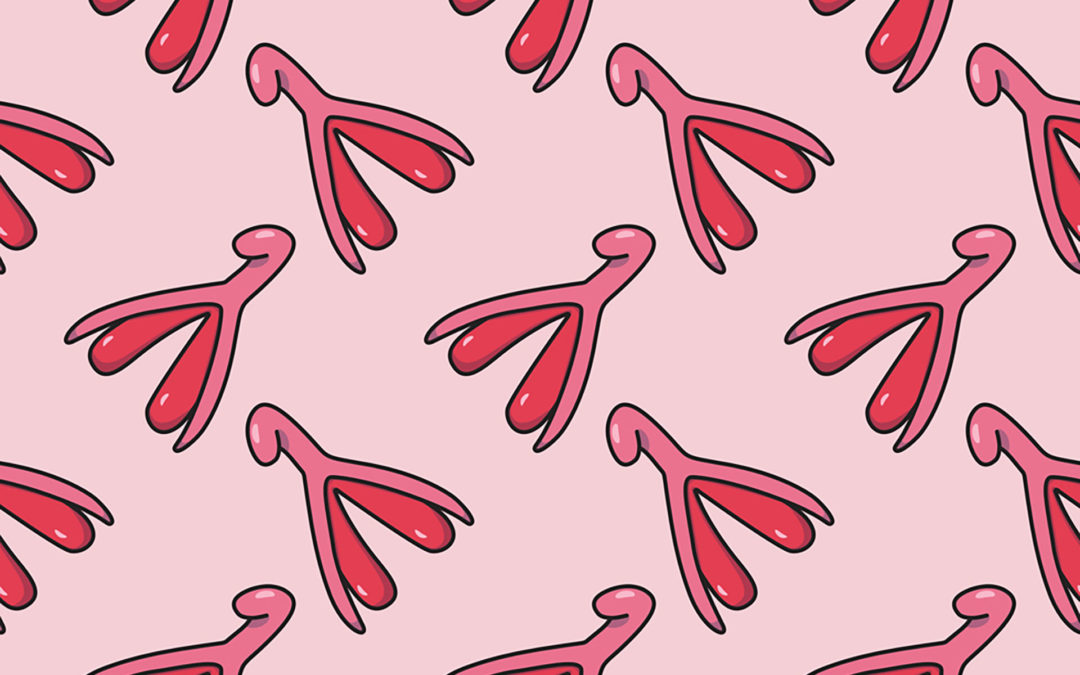Medical textbooks abound with anatomical diagrams and images of the penis, but the clitoris is seldom represented. Many physicians actually feel uneasy when talking about it.
The clitoris is the key topic of an article recently published by the The Guardian: https://www.theguardian.com/lifeandstyle/2020/nov/01/the-sole-function-of-the-clitoris-is-female-orgasm-is-that-why-its-ignored-by-medical-science, which mentions some seminal studies (and artworks) that reconstruct the clitoris’ anatomy.
Since 1947, only 11 articles showing an anatomical dissection of the clitoris have been published worldwide, while hundreds more just briefly mention clitoral anatomy in connection with procedures aimed at restoring sensation following a cliteradectomy or female genital mutilation.
The first, thorough and complete anatomical study of the clitoris was conducted by a urologist, Dr Helen O’Connell, and published in 1988. In 2005, a subsequent study examined it under Magnetic Resonance Imaging. Dr O’Connell discovered it was not just a small lump of erectile tissue – which some texts described as the “poor homologue” of the penis. It was actually a very unusual organ, with lots of nerves branching out and extending beneath the pubic bone, enveloping the vaginal opening, with bulbs that swell when the woman is aroused.
Nevertheless, 20 years after that groundbreaking study was published, medical research still seems to neglect clitoral anatomy.
“There’s the norm that’s the male, and then we’ve got kind of this subset over here who are not male,” Dr O’Connell says.
“And their unique characteristics are differences … there was a feeling that they were not whole people in the way that these other people are whole people and deserving of having their body parts having a full description.” When she specialised in urology, she noticed that while prostate removal surgery very much focused on not damaging the nerves connected to the penis’ erectile tissue, no such work was done to monitor the clitoris’ nerves. “It was pretty clear that what we were looking at was kind of a shadow of an organ rather than the organ itself” she adds.
In 2016, Dr O’Connell co-wrote a paper that found – based on several macroscopic anatomical dissections – that there was no erectile tissue in the vaginal wall. Hence, the G-spot didn’t exist. The only erectile tissue in that area is the clitoris, and this leads to the theory that the G-spot is quite simply the swollen bulbs of an aroused clitoris, which can be felt through the vaginal wall.
Outside the medical sphere, Dr O’Connell’s research has been met with great enthusiasm. U.S. artist Sophia Wallace created a “cliteracy” campaign, which aims to inform women about their own anatomy. Wallace’s art sheds light on an organ with an obscure history. And there are many others who have unquestionably done a great job – much better than medicine has – in depicting clitoral anatomy in their work.
Take, for example, Alli Sebastian Wolf – an artist who lives in Sydney – who, in 2017, created an anatomically accurate golden clitoris, on a 100:1 scale. “I was in my mid-20s when I saw what a clitoris actually looked like and was kind of, first of all amazed by how wonderful it is, and second of all: why have we not been shown this or taught this? When I knew well before puberty what a fallopian tube and uterus shape was. Which, you know, far less important to my daily life,” she says.
Alli Sebastian Wolf claims it is easier for some people to talk about sex and sexual organs at a festival, to a woman covered in glitter, than to their own doctor. She is currently working on a one-floor high inflatable golden clitoris, though she says she hopes knowledge of the clitoris will soon become crystal clear, to the point that creating artworks connected to it would be as outdated as creating penis-related art. “It will hopefully get to the point where my art is totally irrelevant”.
Dr O’Connell’s goal is just as modest: she wants female anatomy to be considered on a par with male anatomy. If we are to achieve this, we must overcome institutional and societal prejudice against women enjoying their own sexuality. Bottom line, it means studying the clitoris.

Recent Comments